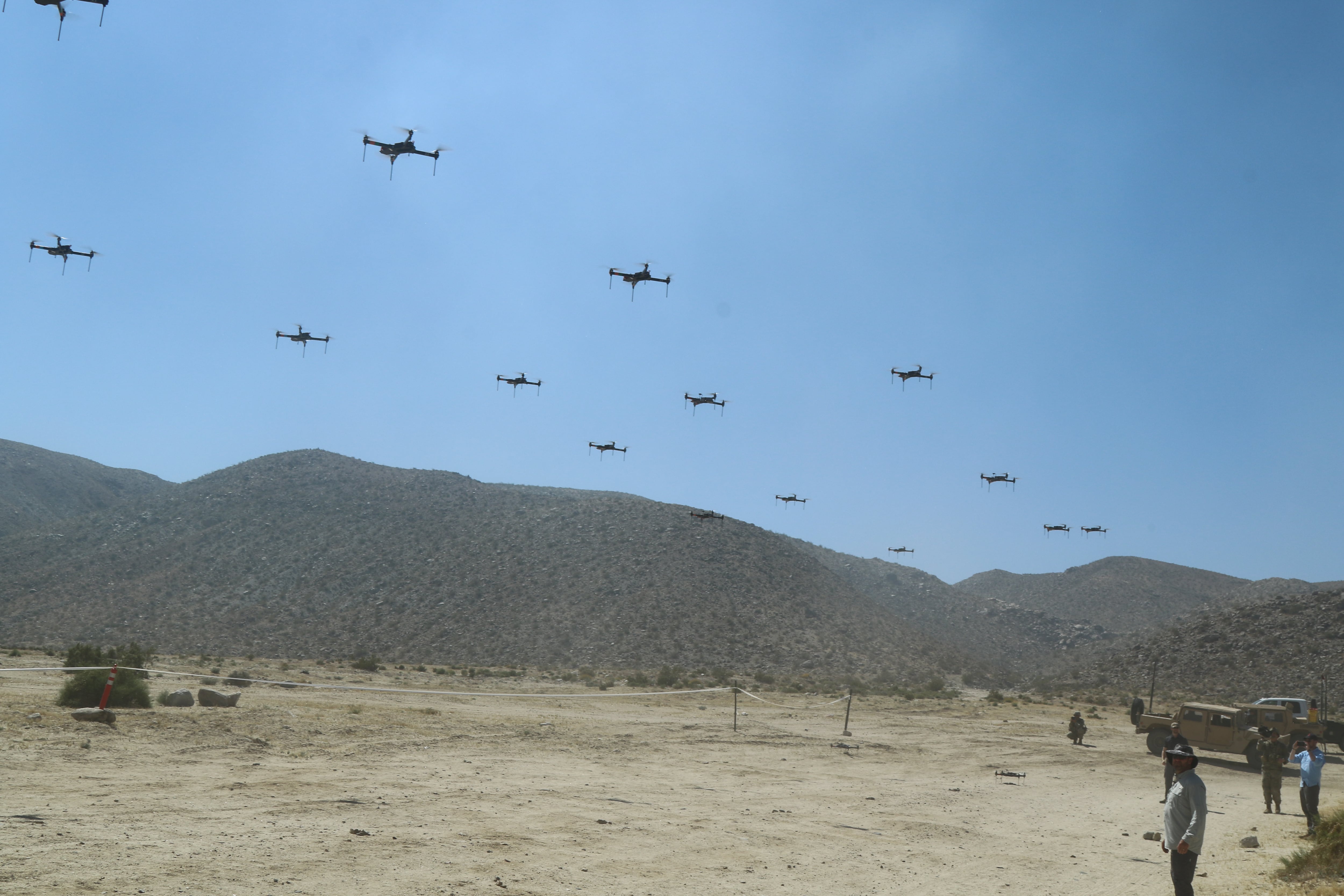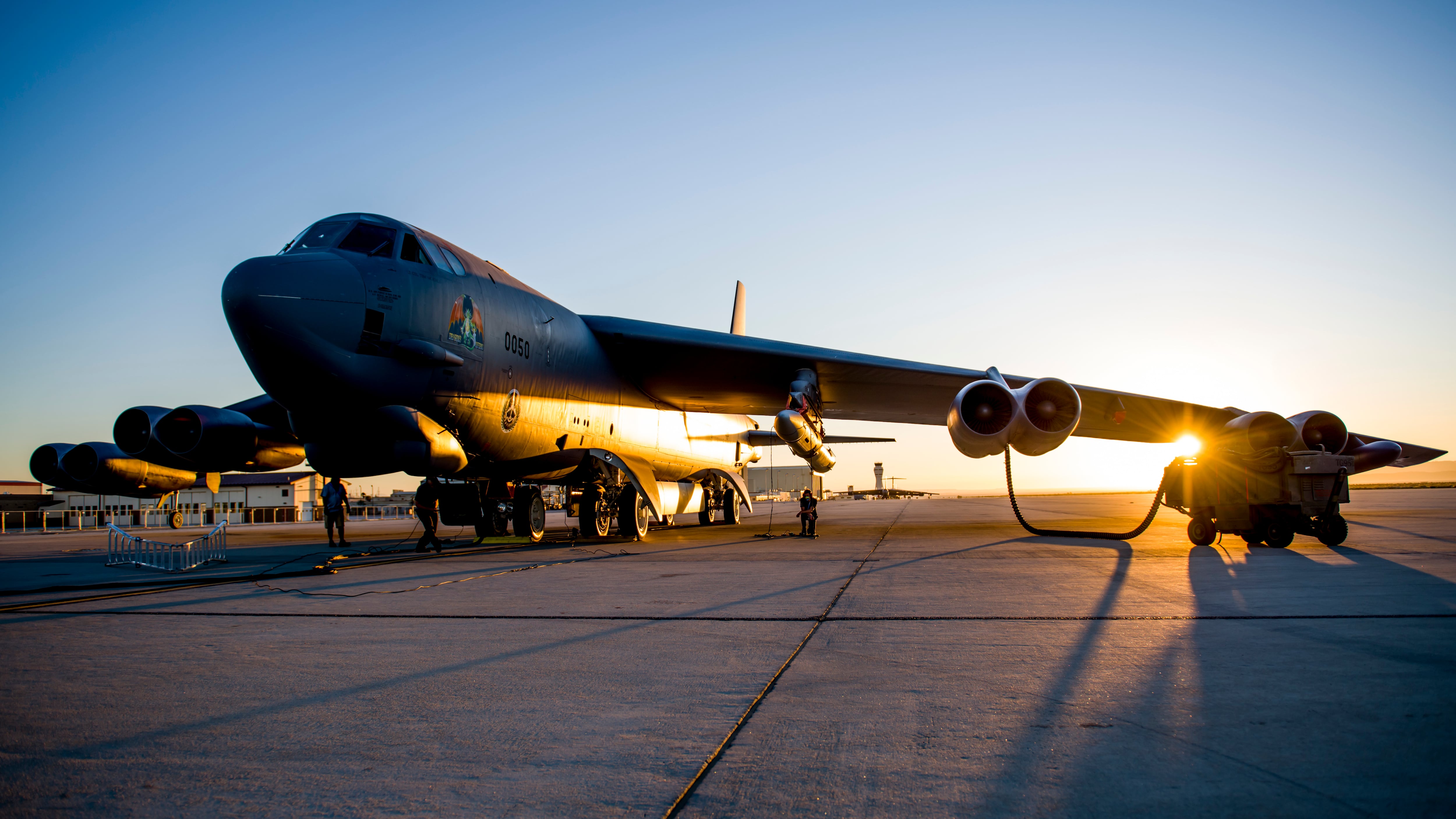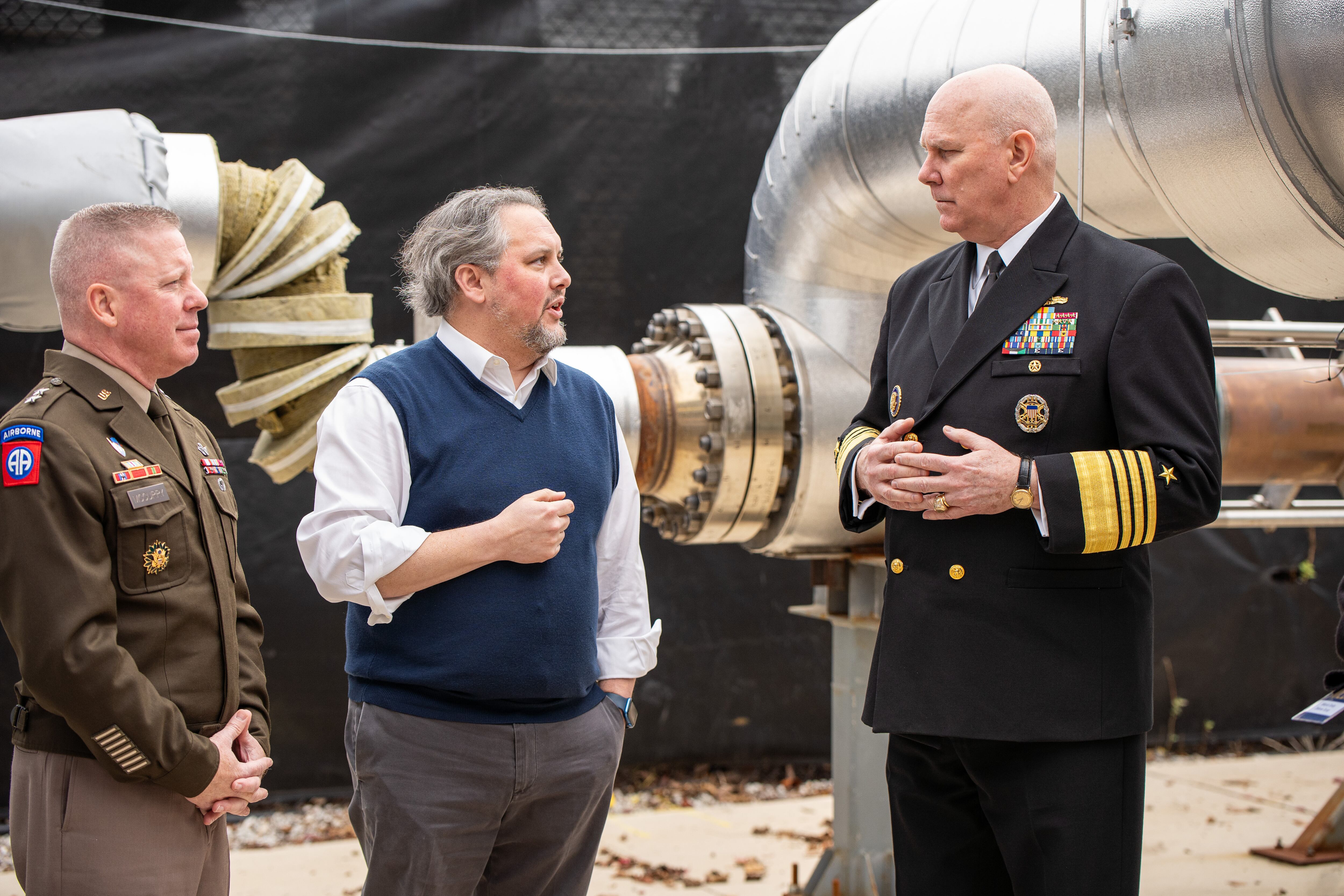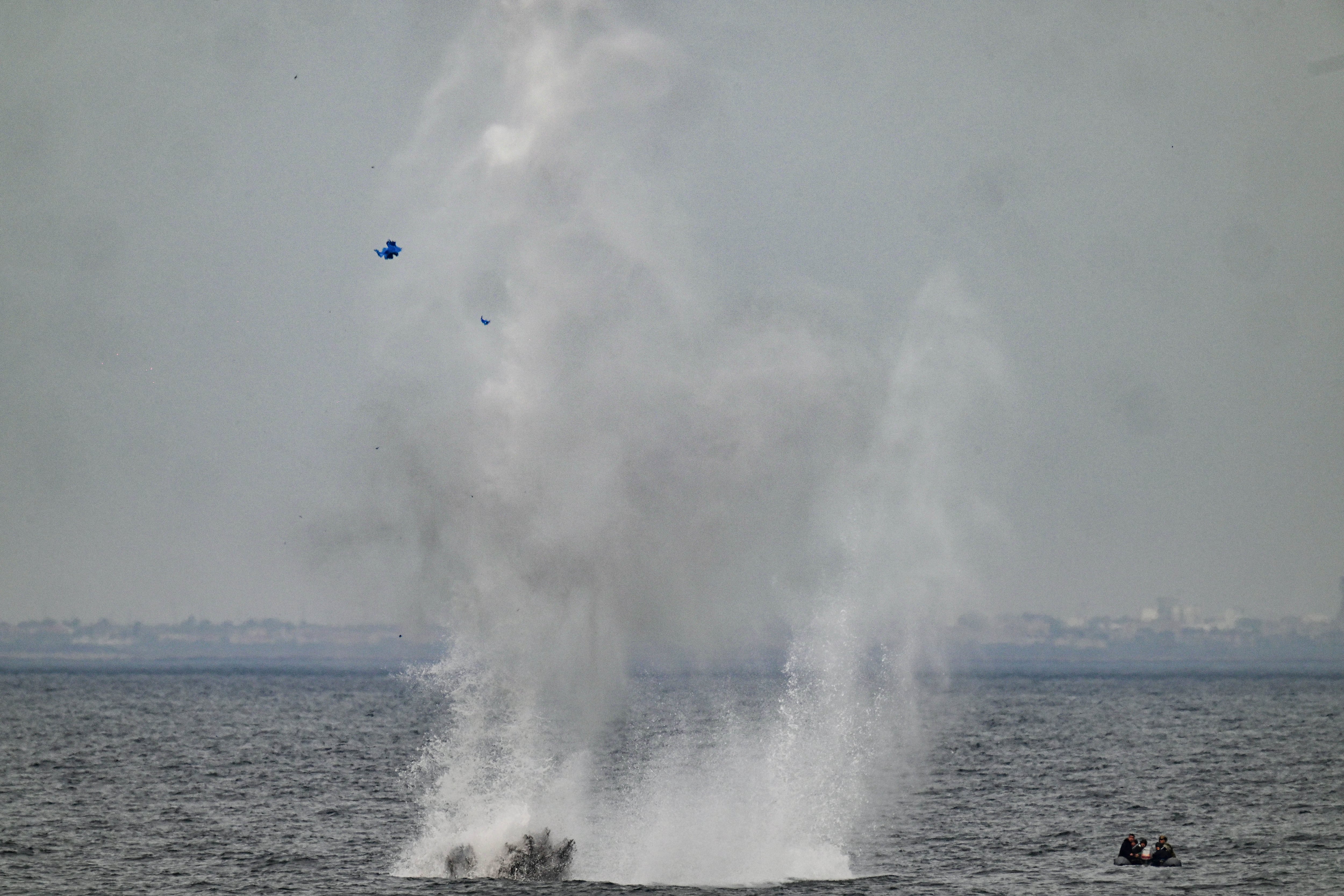MARINE CORPS BASE QUANTICO, Va., ― Last year at the annual military expo here, Commandant Gen. Robert B. Neller told industry his vision for simulations is a kind of Star Trek-like holodeck in which any Marine could fight any battle on any terrain in virtual reality.
Since then, Secretary of Defense James Mattis has said that close combat infantry units should fight 25 battles before they ever taste real combat.
This year one of the Marines in charge of bringing those simulation dreams to reality laid down some of the tangible needs of the Corps now and in the near-term.
Lt. Col. Byron Harder, with Training and Education Command’s capabilities division, told the audience at this year’s Modern Day Marine military expo that while live training will always remain the standard against which a unit’s readiness is measured, even live training has its limits.
It costs a lot of money to ship Marines out to Twentynine Palms or other areas. It costs money to fire munitions. Some of those munitions can’t be fired in most areas.
Some of the advanced weapons, such as cyber and electronic warfare types, can’t be used for fear of damaging civilian networks or facilities in the United States. And some really advanced weapons can’t be demonstrated where just anyone can see them in action, thus revealing our tech to adversaries.
And that is where simulations can help bridge the gap.
But first, there’s a list of things that must come to fruition.
Much of that is going to be software and bandwidth, basically getting better versions of terrains and simulations that are more realistic and can accommodate as much as a division’s worth of players and an equally complex, simulated adversary.
But some items are smaller and more hands-on, like better virtual reality and augmented reality headsets.
Those headsets are key since the Marines want them to work not as they do now, with pounds of cabling in bulky indoor shooting simulators but light with long-lasting batteries that can be taken in the field and on deployment.
Harder said a goggle that is about twice the weight of existing eye protection, perhaps with its power source somewhere on the body, is likely five to 10 years away based on his survey of the field.
There’s another an ongoing need: better drones.
But instead of longer flying, large-scale drones that can coordinate complex fires and sensors for the operational environment, what Harder said simulations needs are smaller drones that can fly lower, giving Marines a street-level, detailed view of the battlespace so they can create their own terrain maps and fight the simulated fight in the areas they’ll really be operating in.
And those video feeds that are now on every ISR platform in the real world? Simulations need them too, to be realistic. That means game designers have to have human-like activity going on in areas instead of some digital “blob” representing enemies. That way, when a commander wants to zoom in on a tactical frame in the game, they’ll be able to do it just like in theater.
Which brings it to one of the more ambitious items beyond terrain and hardware: getting simulations to act more like humans.
As it works now, unit commanders set up their forces, work their mission sets and then the virtual “forces” collide and often a scripted scenario plays out.
Not too realistic.
What’s needed is both civilian simulations to act like civilian populations might act in the real world and the same for the enemy, taking advantages, fighting and withdrawing.
But one step further is key: The enemy has to talk back.
When a commander finishes the fight, they should be able to query the virtual enemy and figure out why it did what it did, how it gained a certain advantage.
And it shouldn’t take a programmer to “talk” with the simulation. Units communicate via voice and chat. That’s how simulations users must be able to talk with their simulated civilians, allies and enemies, in plain language.
These pursuits are not happening in a vacuum. This April for the first time Marine pilots at both Yuma, Arizona, and Camp Pendleton, California, ran flight simulations coordinated with ground units at the Marine Corps Air Ground Combat Center in Twentynine Palms, California.
Those were done at a battalion level with a short prep time, far different than the large-scale Marine Expeditionary Unit or Marine Expeditionary Brigade-sized training that is typical.
That is part of a larger effort to create a “plug-and-play” type of training module that any battalion, and later smaller units, can use at home station or on deployment to conduct complex, coordinated training.
What made that work new was pairing legacy systems with a variety of software and operating systems between them.
That’s another example of what needs to be fixed.
Marines and other services are, in many cases, using systems that were designed decades apart and creating a labyrinth of patchwork methods to get the hardware to work together when it wasn’t built for that type of operation.
The new systems must be open architecture so that new tech, new weapons and new terrain can be added on the fly. But also secure enough to operate across networks and not be spied upon by those who would want a peek at our tactics.
Across the infantry battalions Marines received new gear last year called Tactical Decision Kits. These allow for squad to company-sized elements to do video game-play for their unit exercises, complete with NFL-style replay of engagements and decisions.
That’s a low-level example of one thing that’s lacking in current training, Harder said. Right now the main piece of tech for a Marine commander conducting an after action review is a pen and paper pad.
But with ISR drones, body cams and sensors, Marines in the near-term future should be able to monitor individual Marine’s energy and hydration levels, where they pointed their weapon, when they fired, how many rounds, if they hit their target, even where their eyes were looking while on patrol.
And, if on deployment, Marines can’t rely on a cadre of civilian contractors back home to run their hardware. To that end, the Corps began two courses last year, the Simulation Professional Course and the Simulations Specialist Course.
Both give Marines in infantry units experience setting up simulations and running the games for their units. They input training objectives and can understand and put together training for the unit staff or just for their fire team back in the barracks.
Todd South has written about crime, courts, government and the military for multiple publications since 2004 and was named a 2014 Pulitzer finalist for a co-written project on witness intimidation. Todd is a Marine veteran of the Iraq War.








